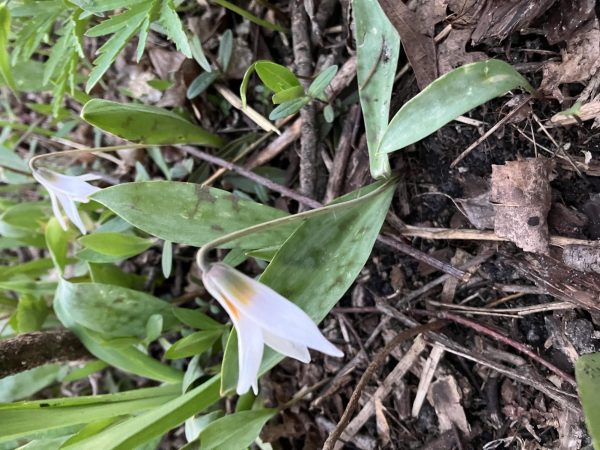Spring wildflowers have come to the Arb! As the invasive Siberian squill begins to fade away,
the season starts for a native wildflower that blankets the forest floor: the white trout lily (Erythronium albidum).
Trout lilies are best identified this time of year, when their leaves and flowers pop up above the soil. The plant produces six white tepals (a flower part which combines the petals and sepals) that sprawl, star-like, during the day and close at night. Trout lilies sport elegant, elongated leaves that are bright green and mottled with a red-brown. Young trout lilies will only produce one leaf and no flower; older trout lilies produce 2 leaves and a single flower.
Trout lilies may only reach about 8 inches tall, with most of their height coming from the stalk which lifts the flower. However, the flower stands out, as it produces large colonies next to rivers, marshes, and streams where the soil has plenty of water. These trout lily colonies are formed from a single mother flower. They may take decades to grow and survive for centuries. Besides the in Arb, massive trout lily colonies abound in the nearby Nerstrand Big Woods State Park. Ants help to disperse trout lilies throughout the landscape by moving their seeds.
Trout lily flowers and colonies are only visible for a brief few weeks. They bloom while all our deciduous trees stand leafless, but when those trees grow leaves, the trout lily will die back. By summer, all traces of the flower will have gone except for their roots and shoots underground, as the plant waits for the next spring.












